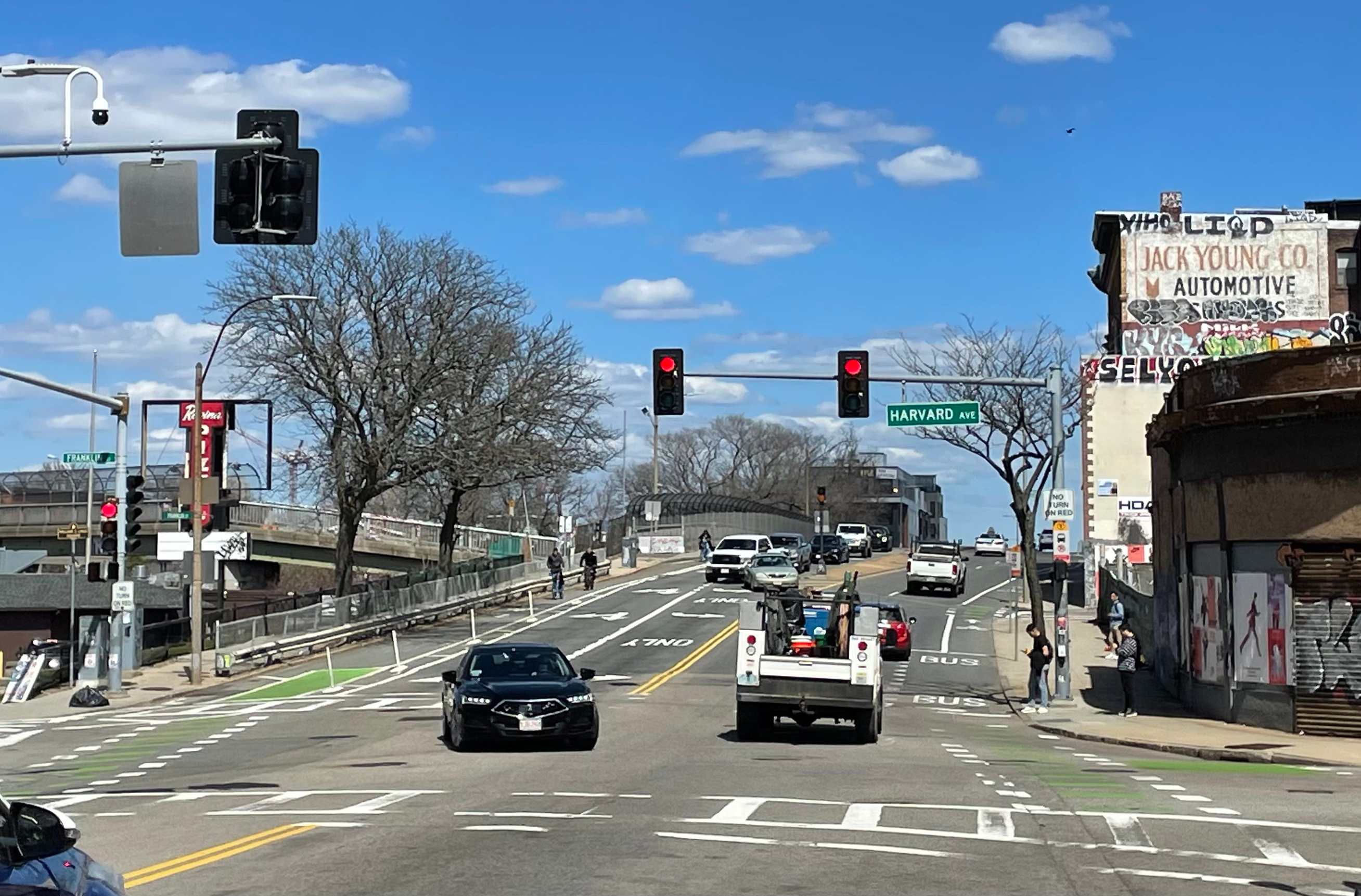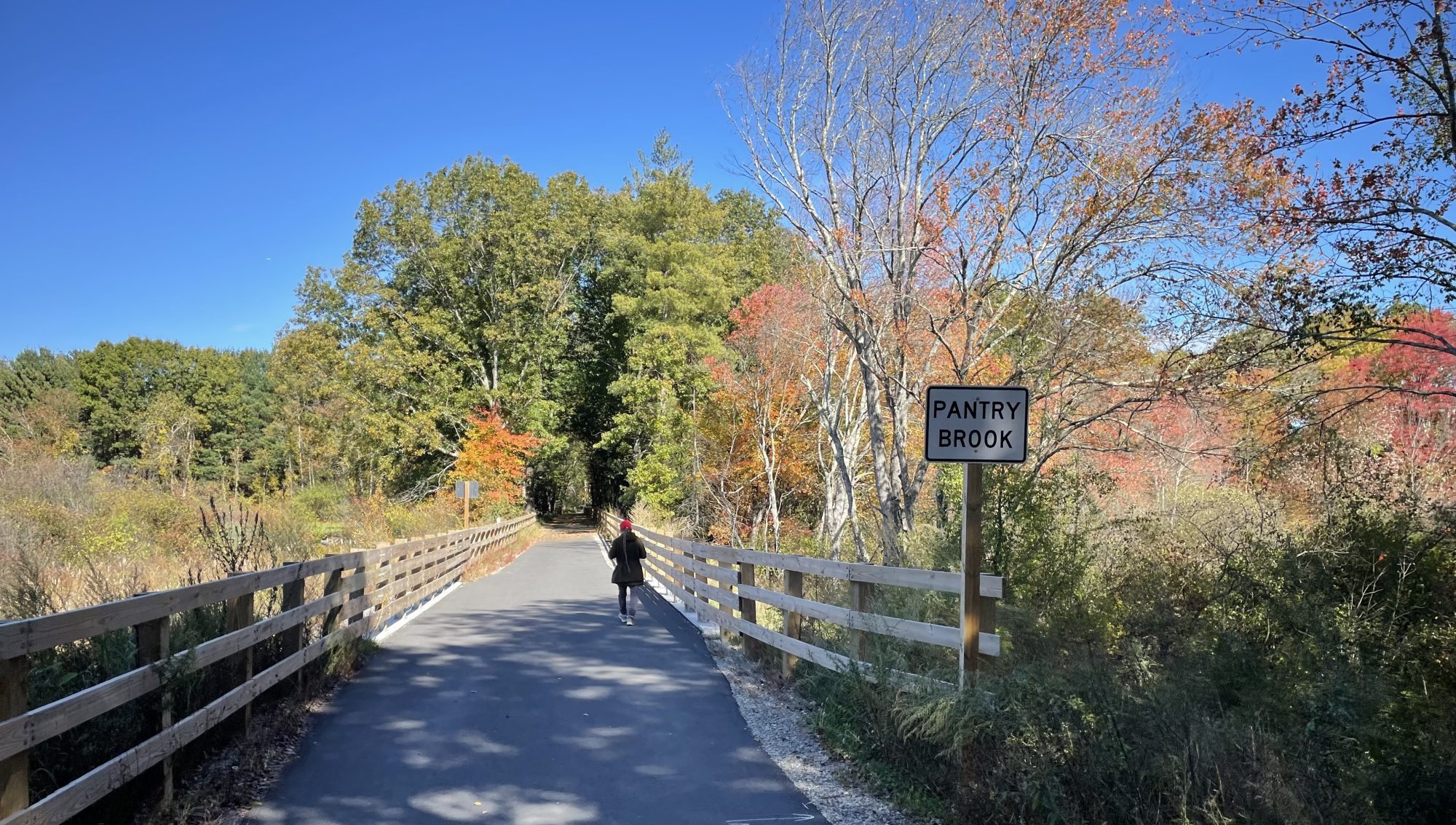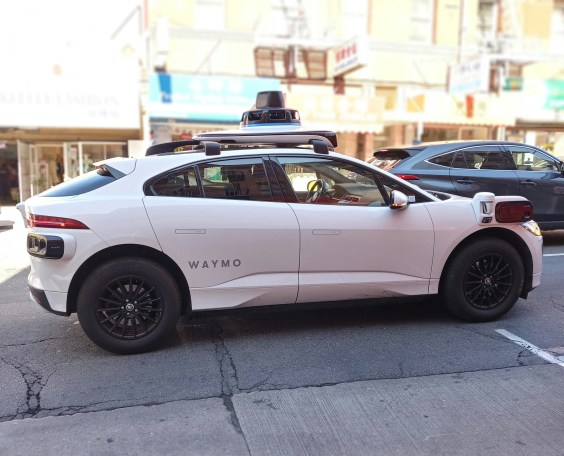In the past month, MassDOT has agreed to two significant changes in its Allston I-90 megaproject in response to pressures from sustainable transportation advocates.
Although MassDOT won a $335 million federal grant to help pay for the project earlier this year, that grant was $165 million less than MassDOT had hoped to receive from Washington.
That means that MassDOT still needs to fill in a formidable funding gap before it can start construction. Value-engineering the project to trim less-than-necessary expenses will be one way to fill the nine-figure shortfall.
Cambridge Street bridge will be replaced, not rehabbed
The first significant change concerns the Cambridge Street overpass over I-90, which is one of the few connections that Allston residents have over the Turnpike.
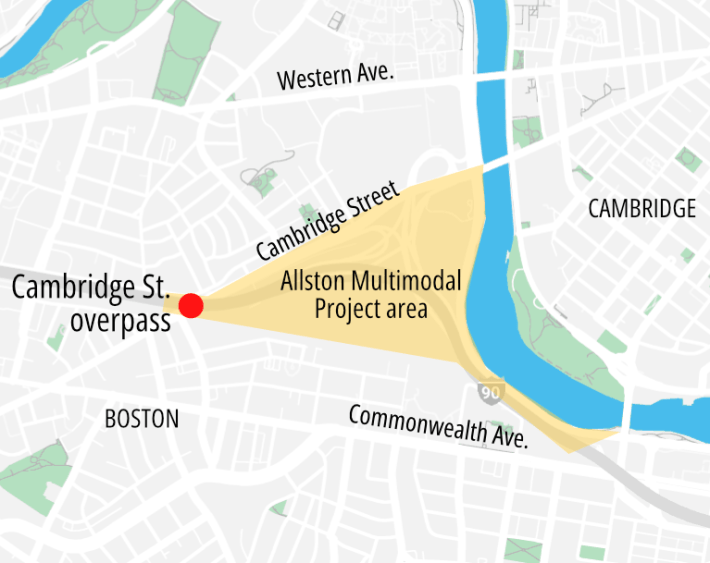
The current bridge (pictured at the top of this story) features narrow sidewalks that are to steep to meet the requirements of the Americans with Disabilities Act (ADA), but the roadway itself is absurdly wide, with four lanes of traffic for motor vehicles, even though Cambridge Street is only two lanes wide immediately to the bridge's south.
Until recently, MassDOT had been considering two possibilities for that overpass: a rehabilitation that would have re-built the deck of the existing bridge structure with some limited upgrades to its sidewalks and crosswalks, or a full-scale replacement with a new bridge that meets ADA standards and MassDOT's complete streets guidelines.
Many Allston neighbors and members of the project's advisory task force strongly favored the latter option.
In a March 20 letter to MassDOT Secretary Monica Tibbits-Nutt, 20 environmental groups, neighborhood organizations, and transportation advocacy groups told the administration that "there is no bridge rehabilitation option that makes the bridge safe, accessible, and ADA compliant. Rebuilding the bridge will also allow for much better bike and pedestrian connections to West Station."
Two days later, on March 22, MassDOT Highway Administrator Jonathan Gulliver announced that the agency would commit to the replacement option during a virtual meeting with neighbors and advocates.
With this decision, the existing bridge will undergo a minor bridge preservation project to keep it standing for a few more years, then begin the full-scale replacement project sometime after construction on the rest of the Allston Multimodal Project begins, around 2030.
The demolition of the existing bridge will also cut off access to the existing Lincoln Street pedestrian bridge, but project planners are confident that a new, ADA-accessible replacement can be completed and opened before that happens.
Train layover has 'gotta go'
An even more significant change to the Allston Multimodal Project concerns a huge multi-block train yard that had been proposed for the heart of the project, next to the new West Station.
Since the early stages of the Allston Multimodal Project's design, the MBTA had insisted on building a four-track layover facility where up to eight commuter rail trains could be stored during off-peak hours.
Although it was ostensibly transit infrastructure, many transit advocates panned the idea of building what was effectively a massive parking lot for trains in the heart of a new transit-oriented neighborhood.
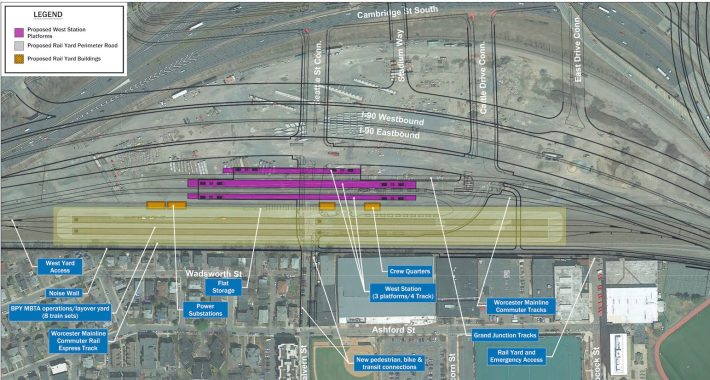
In that same March 20 letter to MassDOT mentioned above, advocates also asked the administration to "remove the MBTA layup yard from the project," calling it "unnecessary, inconsistent with the MBTA’s Regional Rail vision, (and) incompatible with economic development at Beacon Park."
Earlier this month, one of the signatories of that letter, Allston resident Jessica Robertson, asked Secretary Tibbits-Nutt about that request at the WalkMassachusetts annual celebration, where the Secretary was a keynote speaker.
After thanking the Secretary for the decision to replace the Cambridge Street bridge, Robertson asked "can we look forward to a springtime of many more decisive decisions, on things like getting rid of the rail layup and..."
"Oh, the layover's gotta go," interrupted Sec. Tibbits-Nutt, to applause from the audience.
"That's on camera, right?" asked Robertson.
"Oh, don't worry," answered the Secretary, laughing. "I've already said this twice, I counted in my head before I said it. No, the layover's gotta go."
The Secretary went on to note how the proposed layover added another massive piece of infrastructure that divided the existing neighborhoods around Commonwealth Avenue from the Charles riverfront, contrary to the spirit of the federal "reconnecting communities" funding that awarded the project a $335 million grant earlier this spring.
Tibbits-Nutt warned that the T did have legitimate needs for train layover space, and that the Commonwealth needs to pursue its plans to develop a large train yard in Widett Circle, one mile south of South Station.
What's next on advocates' agenda
Advocates involved in the project's task force are hoping that MassDOT and the Healey-Driscoll administration will commit to additional changes in the project's scope in the weeks to come, both to address the project's large financing gap, and to bring the project into alignment with the Commonwealth's goals of improving safety and reducing the massive amounts of climate-baking air pollutants that come from major highways.
In their March 20 letter, a number of those advocates asked for additional commitments and scope changes for the project, including:
- "Right-sizing the excessively wide streets in the current design, minimizing two-stage pedestrian crossings, and adding dedicated bike and bus lanes on key east-west and north-south streets." As we've reported previously, MassDOT's current design calls for the construction of numerous 4- and 5-lane streets connecting to the Massachusetts Turnpike – a roadway design that inflates infrastructure costs while also inflicting significantly higher risks of severe injury and death.
- "Serious review of all options for the number and width of vehicular lanes on both I-90 and Soldiers Field Road." The complexities of re-building 12 highway lanes along the space-constrained and environmentally sensitive banks of the Charles River is a major driver of the current project's eye-watering price tag. Reducing the number of lanes wouldn't just save on the amount of asphalt that taxpayers need to buy; it would also considerably simplify the project's construction logistics. A number of advocates have also noted the incongruities between the Commonwealth's climate goals, which will require a massive reduction in pollution from major highways like I-90, and MassDOT's desire to spend $2 billion to re-build a 1960s-era expressway.
- "Ensure that no element of the project included in the Reconnecting Communities Grant application is removed or diminished." They make up a relatively small component of the project's $2 billion pricetag, but advocate also want to make sure that MassDOT doesn't cut traffic-reducing components of the project. In fact, advocates are asking MassDOT to fast-track several non-highway elements of the project as "early action" items that can mitigate construction-related noise and traffic snarls once the rest of the project begins.
